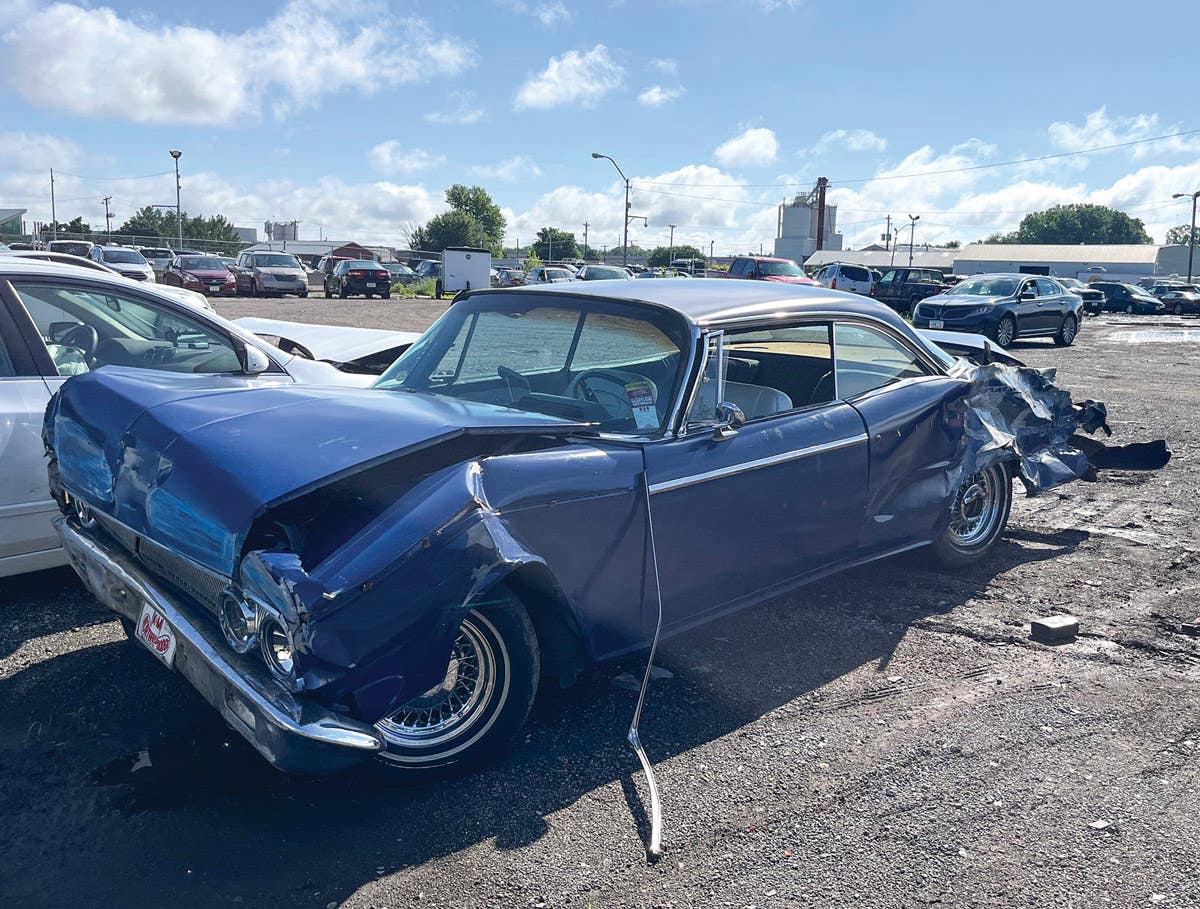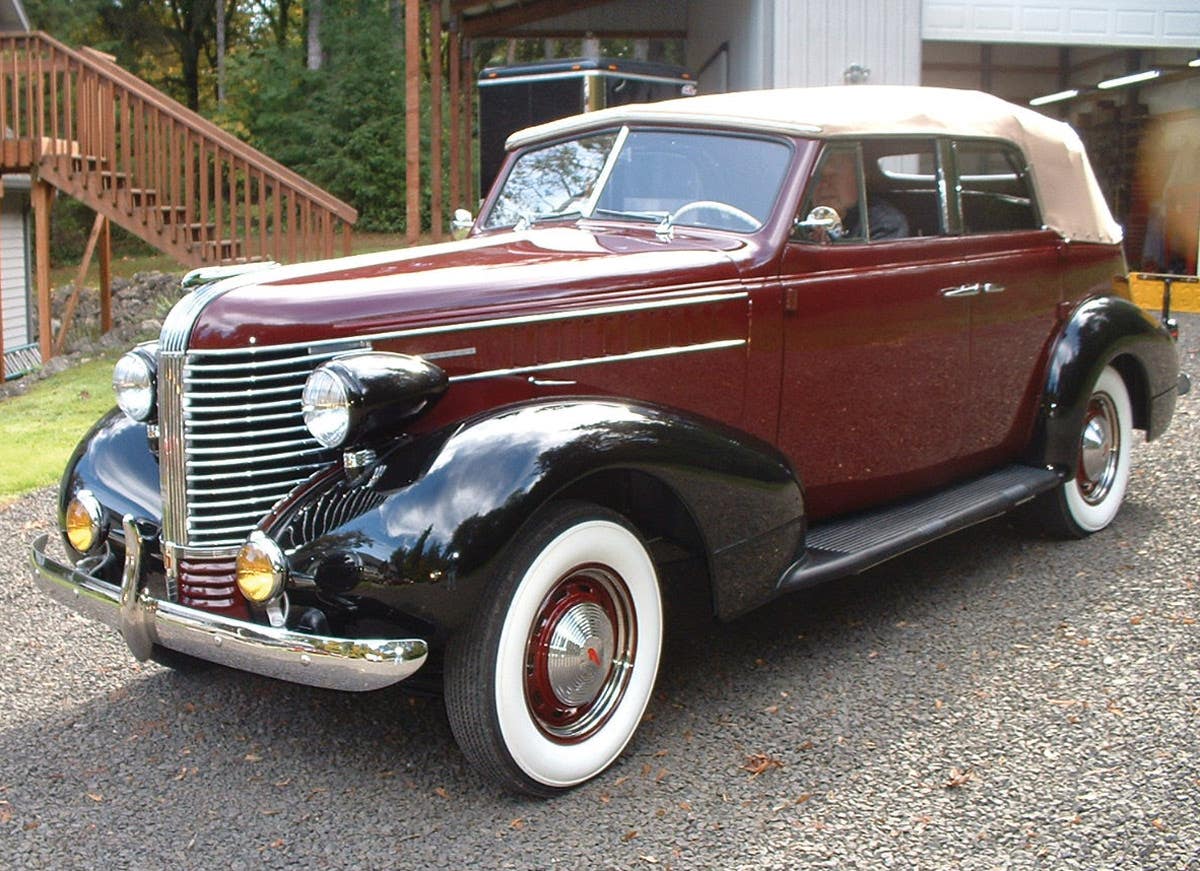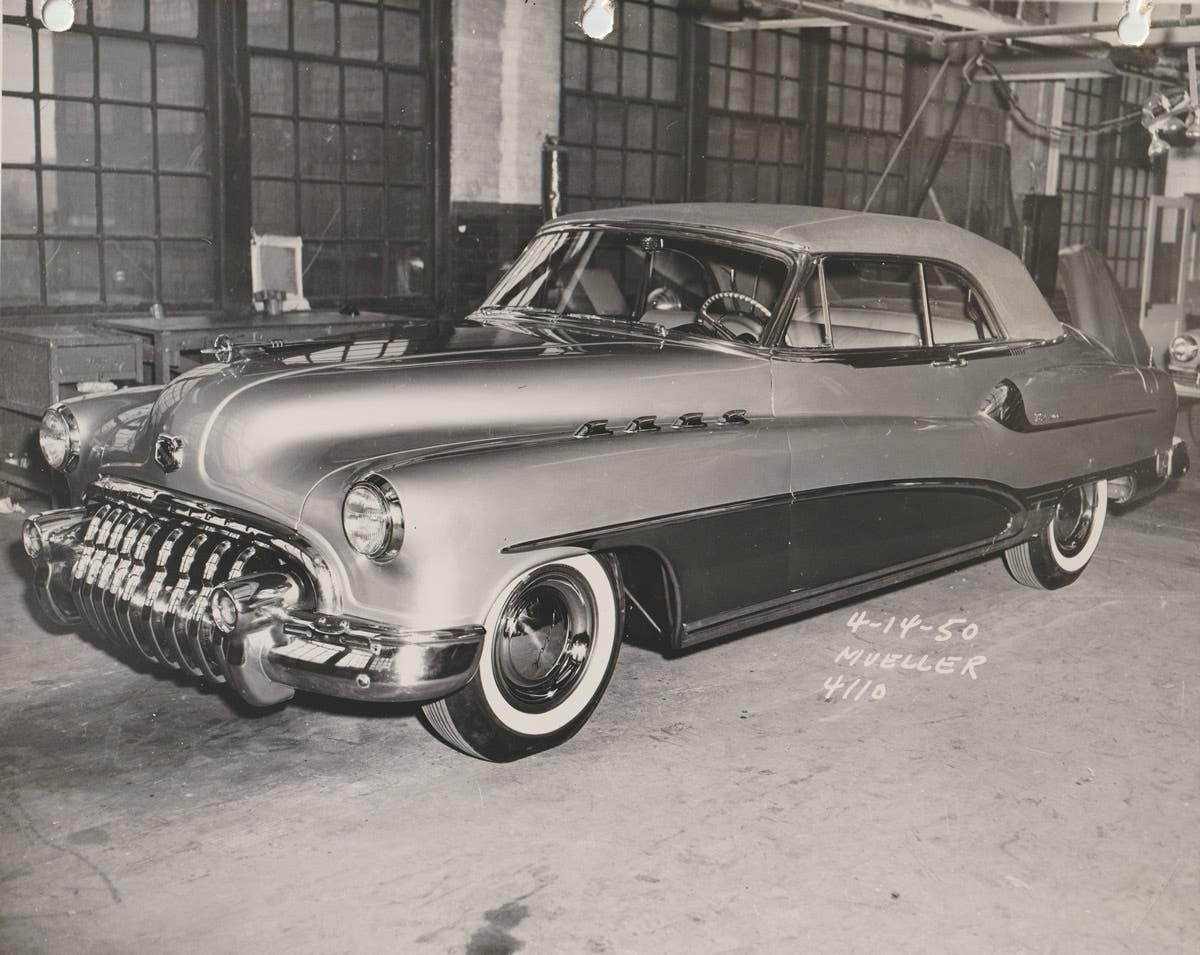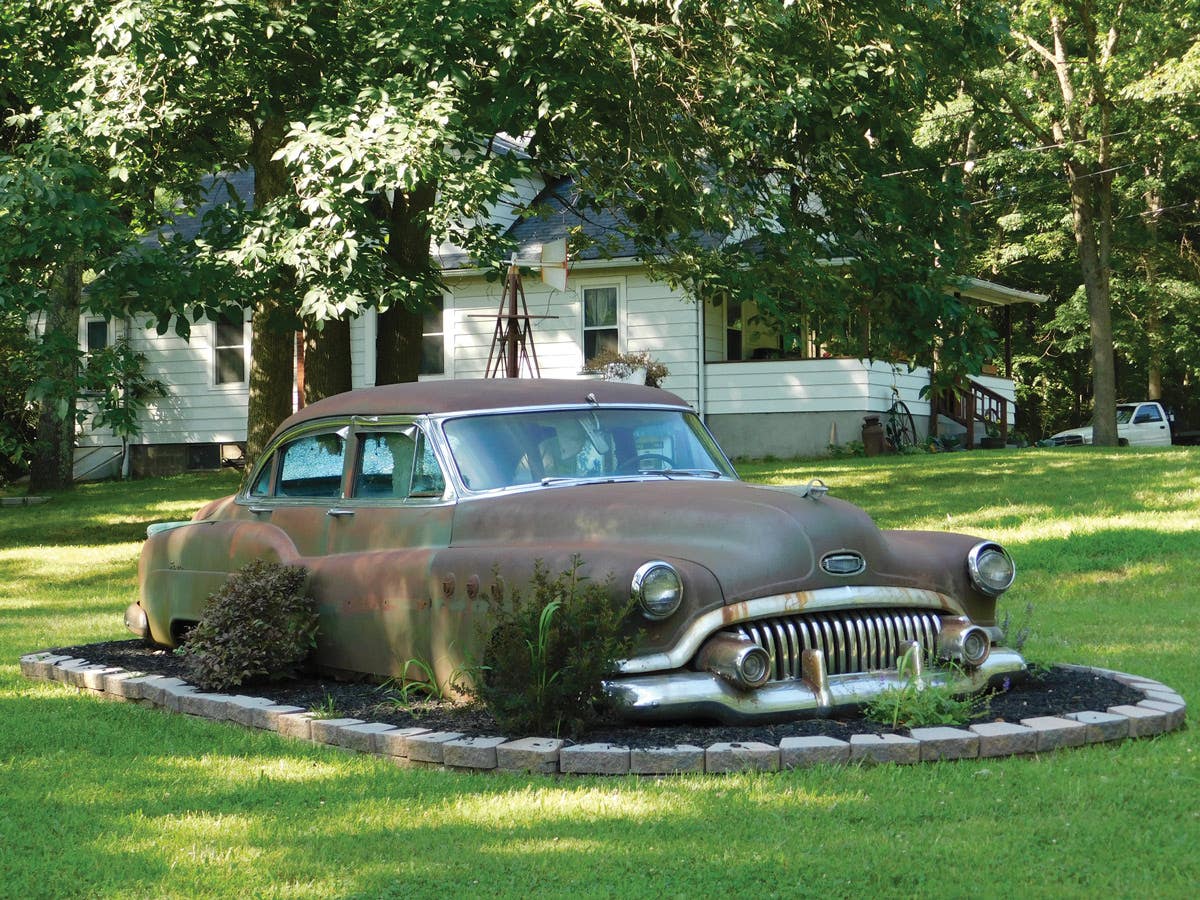Kaufmann’s Quest for Quality
This story first appeared in the Sept. 9, 2010, issue of Old Cars Weekly. We are posting it today to remember the legendary Joe Kaufmann, who died Monday, June 11….
This story first appeared in the Sept. 9, 2010, issue of Old Cars Weekly. We are posting it today to remember the legendary Joe Kaufmann, who died Monday, June 11.
By John Gunnell
Joe Kaufmann of Manitowoc, Wis., is one of the hobby’s longest-running restorers and caretakers of Auburns, Cords and Duesenbergs. He purchased his first Auburn in 1941, and in driving this supercharged Cabriolet, he met other Auburn, Cord and Duesenberg (ACD) enthusiasts, one of them the equally famous Ray Wolff, the late Duesenberg historian.
Over the years, Kaufmann became great friends with Wolff, a Milwaukee import-export professional who kept track of the owner histories of Duesenberg automobiles. During a recent interview, Kaufmann recalled how he and Wolff each obtained their first Duesenbergs.
Kaufmann, now 89, began collecting ACD cars before the outbreak of World War II. He was an aircraft mechanic in the U.S. Army Air Force during the war and was stationed all over the United States where he’d “run into people who had an Auburn and sometimes, if they were being shipped out, I was able to buy the cars real cheap,” Kaufmann recalled. “During the war, nobody wanted an orphan car.”
Kaufmann picked up a non-supercharged 1935 Auburn phaeton in Kansas. “The top was ragged and it used oil, but engine oil from the airplanes was easy to get,” said Kaufmann. “And if you knew how to handle things, you could buy a lot of gasoline without a ration card. And so I’d always have some wheels and fuel.”
While going to school in Seattle, Kaufmann was able to buy another Auburn that he remembers as “being kind of derelict,” but as a result of his interest in Auburns, he ran into people who knew Auburns, Cords and Duesenbergs. After the war, he opened a gas station in Manitowoc. One day in 1947, a man from Madison was servicing record players and drove into town with a supercharged ’36 Auburn phaeton. Kaufmann remembered his old Auburns, went over to talk to the man and wound up buying the car.
The Auburn was parked outside of his service station, and it’s how Kaufmann came to meet people such as Wolff, as well as a Milwaukee man who had a Duesenberg.
“I ended up buying his Duesenberg a couple of years later and, at the time I bought it, I had no idea that the car was, literally, in Ray Wolff’s back yard,” Kaufmann recalled. “This fellow from Milwaukee lived in the area where the Brooks Stevens Museum wound up. He had seen my Auburn in Manitowoc and stopped to visit me because he was looking for a wheel for his car. During World War II, there was a law that people who had a car with two side-mounted spare tires had to give one of them up. Whoever owned this Duesenberg at that time didn’t take the wheel back when they gave up the spare tire, so the man needed a 17-inch wheel.”
Kaufmann explained that a 17-inch Duesenberg wheel would not fit anything else. “They are a headache to take off a car, so whoever it was who owned the car gave up both the wheel and the tire. Then this guy from Milwaukee buys the car and he wants a wheel to fill up the hole in the fender. He saw my Auburn and figured that anyone who owned an Auburn maybe knew about Cords and Duesenbergs. At that time, I didn’t know about them, but he invited me to visit him in Milwaukee and see the car. So, I stopped one day, saw the car — or part of it.”
The man had tried to customize the car and wanted to make it a club coupe, instead of a cabriolet. “He wanted to cut out the back section right where the rumble seat was and he cut a chunk out of it there,” said Kaufmann, pointing to a faded picture of the car. “Then, he sliced the door down the middle and moved that center section back and welded this chunk into the door. He welded in those 11 inches because he wanted an extra seat for his kids, behind the front seat. But, he never finished it.”
By this time, Kaufmann had accumulated three Auburns and two L-29 Cords. “I had a bunch of these ACD cars, so I thought I might as well have a Duesenberg, too,” Kaufmann said. “So, I made the offer that if he ever thought of selling the car some time, I’d like the chance to buy it.”
The Milwaukee Duesenberg owner’s job selling steam Jennies kept him on the road all the time. His territory covered northern Illinois, Iowa, Minnesota, Wisconsin and Michigan, so he traveled quite a bit. When he got near Manitowoc, he’d stop to see Kaufmann and the two became very good friends. Each time they met, Kaufmann upped his offer to buy the car and, eventually, he realized that he had to quit doing this soon because “it was getting to be a little expensive.”
One day, Kaufmann went to Milwaukee and spotted the Duesenberg owner’s everyday car at a restaurant.
“I thought maybe I’d better check with the guy, since I hadn’t heard from him in a while,” Kaufmann remembered. “But then I said that I was not going to bother; that he would call me if he wanted to call me. Well, I got back home and, sure enough, the phone was ringing and it was him. He said, ‘Joe, this is Roy and if you want the car, just come and get it.’” So he did.
“Up to this point I had not seen the whole car; all I had seen was a fender, hood and part of a cowl,” Kaufmann pointed out. “So, when I got down there and saw what I had bought, it turned out that the rest was covered up in a shed or barn and covered with lawn furniture, awnings, water hose and garden equipment — you name it.” Kaufmann couldn’t even see the whole car, “but it was a Duesenberg,” he said.
That car —purchased in 1954 — became the first of between 65 and 75 Duesenbergs to go through Kaufmann’s shop. It was a full two years before the first ACD Club Reunion in Auburn, Ind., an event Kaufmann has never missed.
About this time, Kaufmann learned Wolff was looking for a Duesenberg of his own.
“Ray was in Manitowoc at an export seminar or drumming up business,” Kaufmann recalled. “He had several contacts here and we had known of each other — word of Auburns got around, believe me!”
Wolff stopped to visit and the two men hit it off immediately.
“He told me there were lots of Auburns in Milwaukee all being done,” Kaufmann noted. “When I bought the Duesenberg, I had to call him, because by then, we were talking about Duesenbergs all the time.”
Wolff soon located a Duesenberg in San Diego, Calif., but it was not a convertible like he wanted. He then found a second car for sale in Albuquerque, N.M., and he was going use his old Cadillac phaeton as a trade-in.
“At first, that second deal didn’t go through, so Ray asked me to go to San Diego and bring the first Duesenberg back for him,” said Kaufmann. “I went with my brother.”
Of course, in those days, there were no big commercial transporters and collectors didn’t own trailers — they drove home the cars they bought. On the way back, probably just outside of Albuquerque, as he recalls, Kaufmann and his brother noticed that the Duesenberg they were driving from San Diego to Milwaukee had a flat tire. “We started to repair the flat or change the tire on the side of the road,” Kaufmann explained. “There were no interstates back then and it was a two-lane highway — and it was about 2 o’clock in the morning — so we had to fix or change it ourselves. And as we were working, I could see two big, close-together headlights coming at us and I knew they were from an old Cadillac.”
What had happened was Wolff’s stalled deal on the second Duesenberg had come back “on” while Kaufmann and his brother were gone. The Duesenberg had been delivered to Milwaukee and the driver had picked up the Cadillac that Wolff had traded. When the two cars passed, Kaufmann smiled at the Cadillac driver and said, “I bet I know where you’re going,” and the man shot back, “I bet I know where you’re going, too.” After exchanging pleasantries, the two parties continued on their journeys. “How many times could that happen?” Kaufmann asked.
The Duesenberg that Kaufmann and his brother picked up for Wolff was the well-known Hibbard & Darrin town car originally made for Marion Davies. By the time the car got back to Milwaukee, it was a mess. They had run into a messy snowstorm in central Illinois. Kaufmann still has photos of the car parked in Milwaukee near Wolff’s home. Though the pictures are yellowed with age, icicles, mud and slush are visible under the car’s fenders and headlamps. “There was ice on them about an inch thick,” Kaufmann told us. “It was really something.”
Kaufmann later came to own the car and restored it. “You see, Ray suddenly had two Duesenbergs — the convertible coupe that he really wanted and the town car, so he told me he didn’t know what he was going to do because his wife would kill him for buying them both. I told him not to worry — that I’d buy the town car from him. We spent two years refinishing it back to its original condition. We were able to research it and go with the car’s original colors and that’s the way I thought the car should have been done in the first place.”
Kaufmann will be sharing more ACD history during the ACD Club Reunion in Auburn this year, an event he doesn’t miss. If you’re lucky, you’ll catch him around the Auburn town square, looking after the cars he’s maintained for the past half-century.







